Sian-Yao Huang
Eyes-on-Me: Scalable RAG Poisoning through Transferable Attention-Steering Attractors
Oct 01, 2025Abstract:Existing data poisoning attacks on retrieval-augmented generation (RAG) systems scale poorly because they require costly optimization of poisoned documents for each target phrase. We introduce Eyes-on-Me, a modular attack that decomposes an adversarial document into reusable Attention Attractors and Focus Regions. Attractors are optimized to direct attention to the Focus Region. Attackers can then insert semantic baits for the retriever or malicious instructions for the generator, adapting to new targets at near zero cost. This is achieved by steering a small subset of attention heads that we empirically identify as strongly correlated with attack success. Across 18 end-to-end RAG settings (3 datasets $\times$ 2 retrievers $\times$ 3 generators), Eyes-on-Me raises average attack success rates from 21.9 to 57.8 (+35.9 points, 2.6$\times$ over prior work). A single optimized attractor transfers to unseen black box retrievers and generators without retraining. Our findings establish a scalable paradigm for RAG data poisoning and show that modular, reusable components pose a practical threat to modern AI systems. They also reveal a strong link between attention concentration and model outputs, informing interpretability research.
CmdCaliper: A Semantic-Aware Command-Line Embedding Model and Dataset for Security Research
Nov 02, 2024Abstract:This research addresses command-line embedding in cybersecurity, a field obstructed by the lack of comprehensive datasets due to privacy and regulation concerns. We propose the first dataset of similar command lines, named CyPHER, for training and unbiased evaluation. The training set is generated using a set of large language models (LLMs) comprising 28,520 similar command-line pairs. Our testing dataset consists of 2,807 similar command-line pairs sourced from authentic command-line data. In addition, we propose a command-line embedding model named CmdCaliper, enabling the computation of semantic similarity with command lines. Performance evaluations demonstrate that the smallest version of CmdCaliper (30 million parameters) suppresses state-of-the-art (SOTA) sentence embedding models with ten times more parameters across various tasks (e.g., malicious command-line detection and similar command-line retrieval). Our study explores the feasibility of data generation using LLMs in the cybersecurity domain. Furthermore, we release our proposed command-line dataset, embedding models' weights and all program codes to the public. This advancement paves the way for more effective command-line embedding for future researchers.
Searching by Generating: Flexible and Efficient One-Shot NAS with Architecture Generator
Mar 12, 2021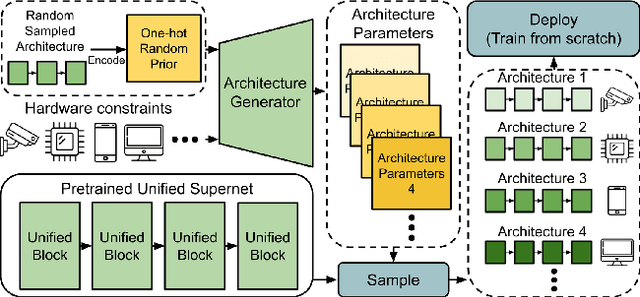


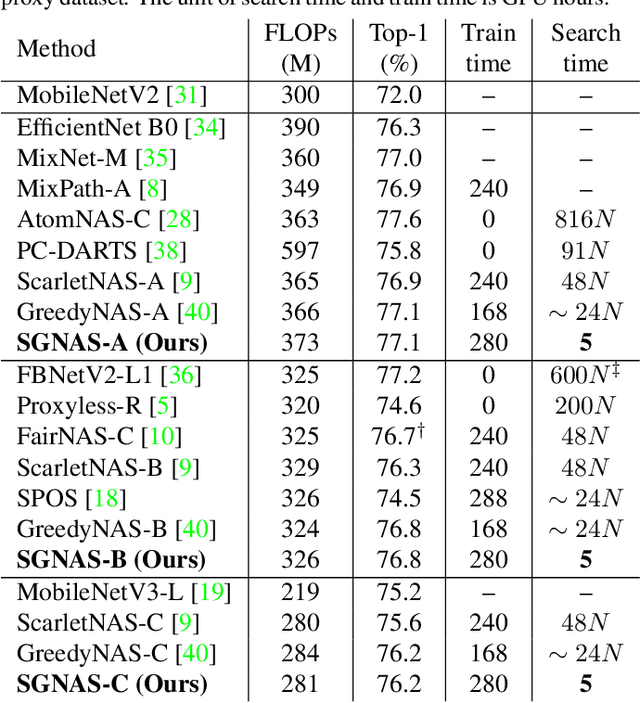
Abstract:In one-shot NAS, sub-networks need to be searched from the supernet to meet different hardware constraints. However, the search cost is high and $N$ times of searches are needed for $N$ different constraints. In this work, we propose a novel search strategy called architecture generator to search sub-networks by generating them, so that the search process can be much more efficient and flexible. With the trained architecture generator, given target hardware constraints as the input, $N$ good architectures can be generated for $N$ constraints by just one forward pass without re-searching and supernet retraining. Moreover, we propose a novel single-path supernet, called unified supernet, to further improve search efficiency and reduce GPU memory consumption of the architecture generator. With the architecture generator and the unified supernet, we propose a flexible and efficient one-shot NAS framework, called Searching by Generating NAS (SGNAS). With the pre-trained supernt, the search time of SGNAS for $N$ different hardware constraints is only 5 GPU hours, which is $4N$ times faster than previous SOTA single-path methods. After training from scratch, the top1-accuracy of SGNAS on ImageNet is 77.1%, which is comparable with the SOTAs. The code is available at: https://github.com/eric8607242/SGNAS.
PONAS: Progressive One-shot Neural Architecture Search for Very Efficient Deployment
Apr 09, 2020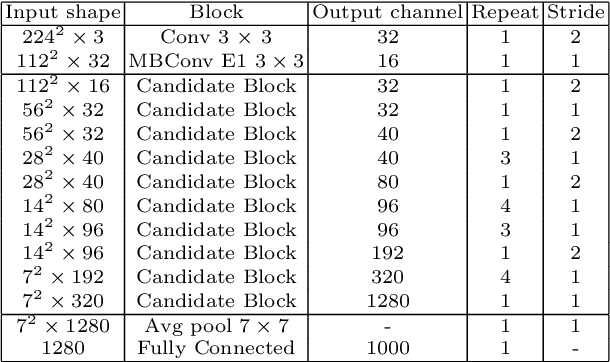
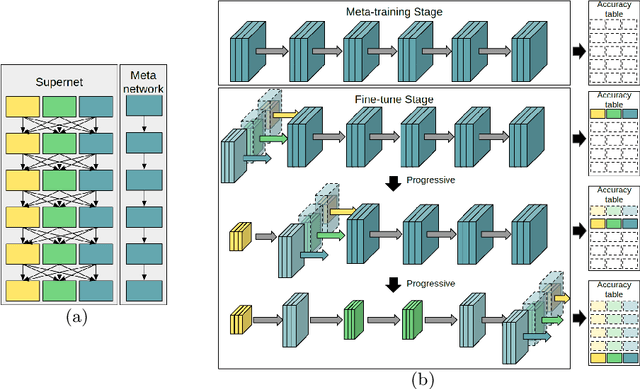
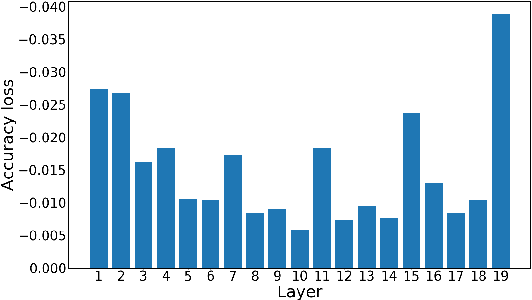
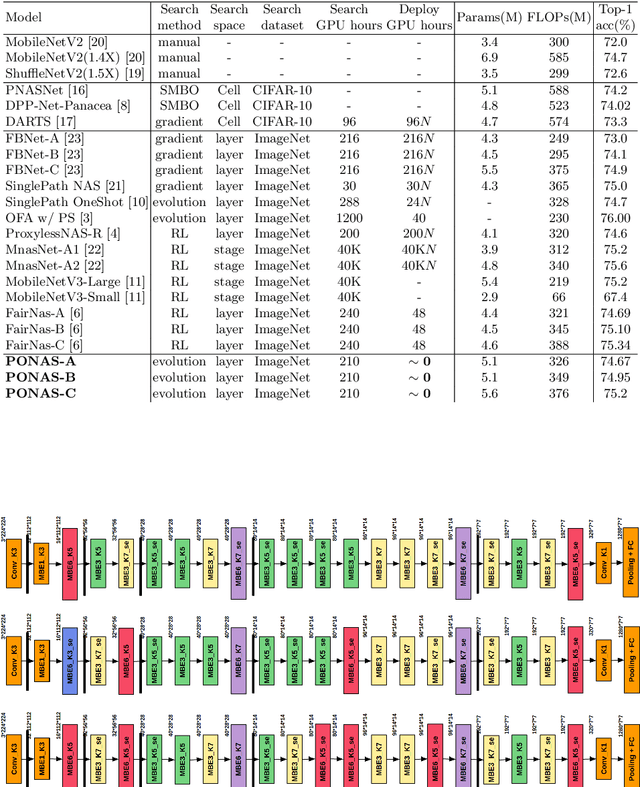
Abstract:We achieve very efficient deep learning model deployment that designs neural network architectures to fit different hardware constraints. Given a constraint, most neural architecture search (NAS) methods either sample a set of sub-networks according to a pre-trained accuracy predictor, or adopt the evolutionary algorithm to evolve specialized networks from the supernet. Both approaches are time consuming. Here our key idea for very efficient deployment is, when searching the architecture space, constructing a table that stores the validation accuracy of all candidate blocks at all layers. For a stricter hardware constraint, the architecture of a specialized network can be very efficiently determined based on this table by picking the best candidate blocks that yield the least accuracy loss. To accomplish this idea, we propose Progressive One-shot Neural Architecture Search (PONAS) that combines advantages of progressive NAS and one-shot methods. In PONAS, we propose a two-stage training scheme, including the meta training stage and the fine-tuning stage, to make the search process efficient and stable. During search, we evaluate candidate blocks in different layers and construct the accuracy table that is to be used in deployment. Comprehensive experiments verify that PONAS is extremely flexible, and is able to find architecture of a specialized network in around 10 seconds. In ImageNet classification, 75.2% top-1 accuracy can be obtained, which is comparable with the state of the arts.
 Add to Chrome
Add to Chrome Add to Firefox
Add to Firefox Add to Edge
Add to Edge